
CFR senior fellow. Views are my own. Retweets are not endorsements. Writes on sovereign debt and capital flows.
85 subscribers
How to get URL link on X (Twitter) App


 Net all the pharma noise out and imports remain flattish (up a bit in October v September) at a high level and exports are more or less flat too -- maybe there is a tiny upward trend since May but it is tiny
Net all the pharma noise out and imports remain flattish (up a bit in October v September) at a high level and exports are more or less flat too -- maybe there is a tiny upward trend since May but it is tiny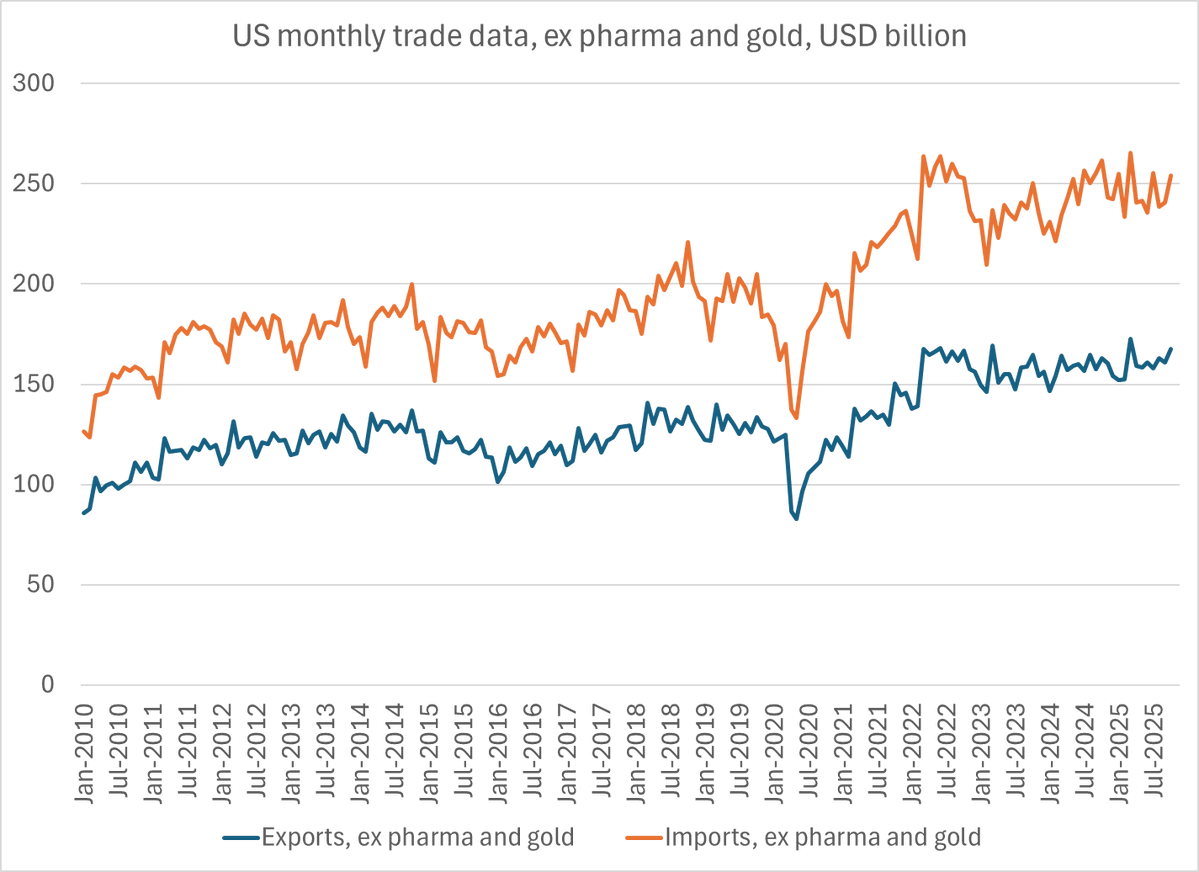
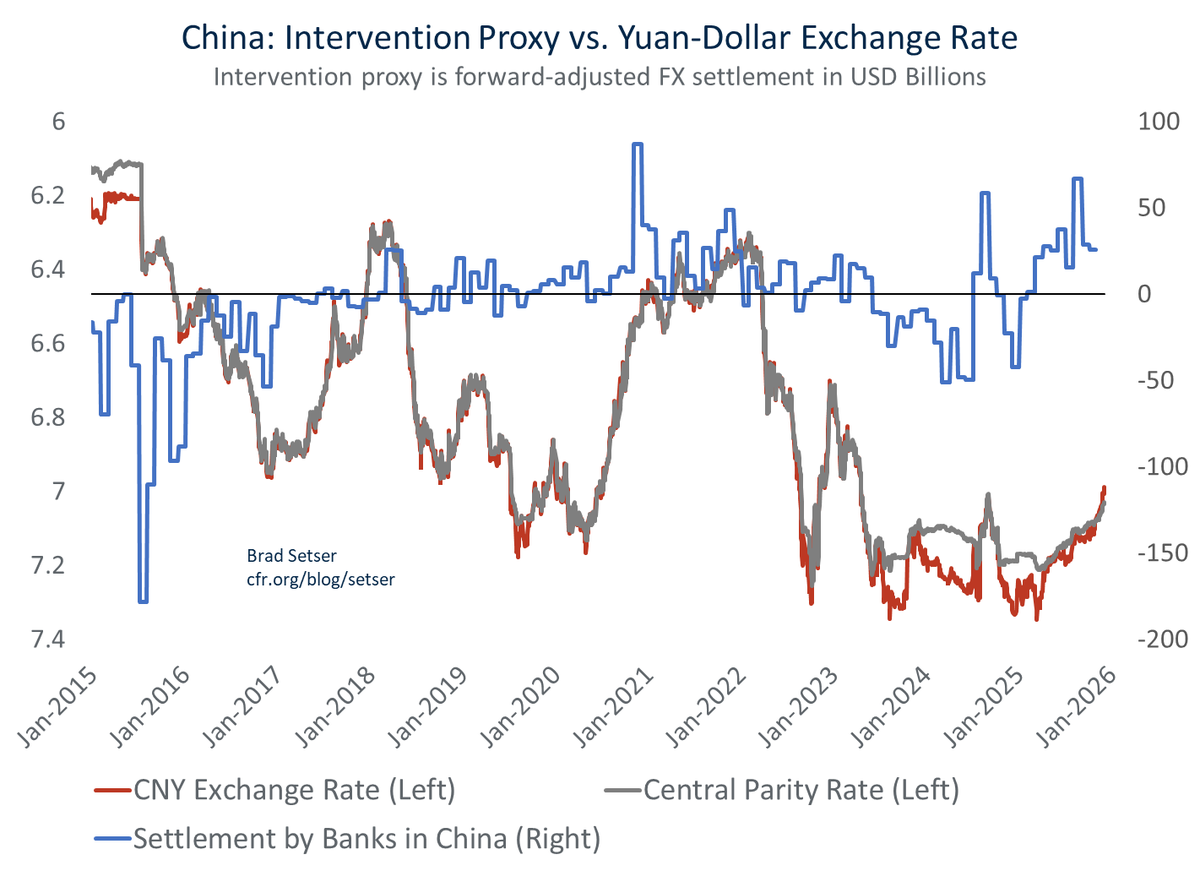
 It isn't like the yuan's appreciation against the dollar has been particularly fast. But it has been steady. And a predictable no volatility appreciation that exceeds the loss from the rate differential is bound to get attention
It isn't like the yuan's appreciation against the dollar has been particularly fast. But it has been steady. And a predictable no volatility appreciation that exceeds the loss from the rate differential is bound to get attention
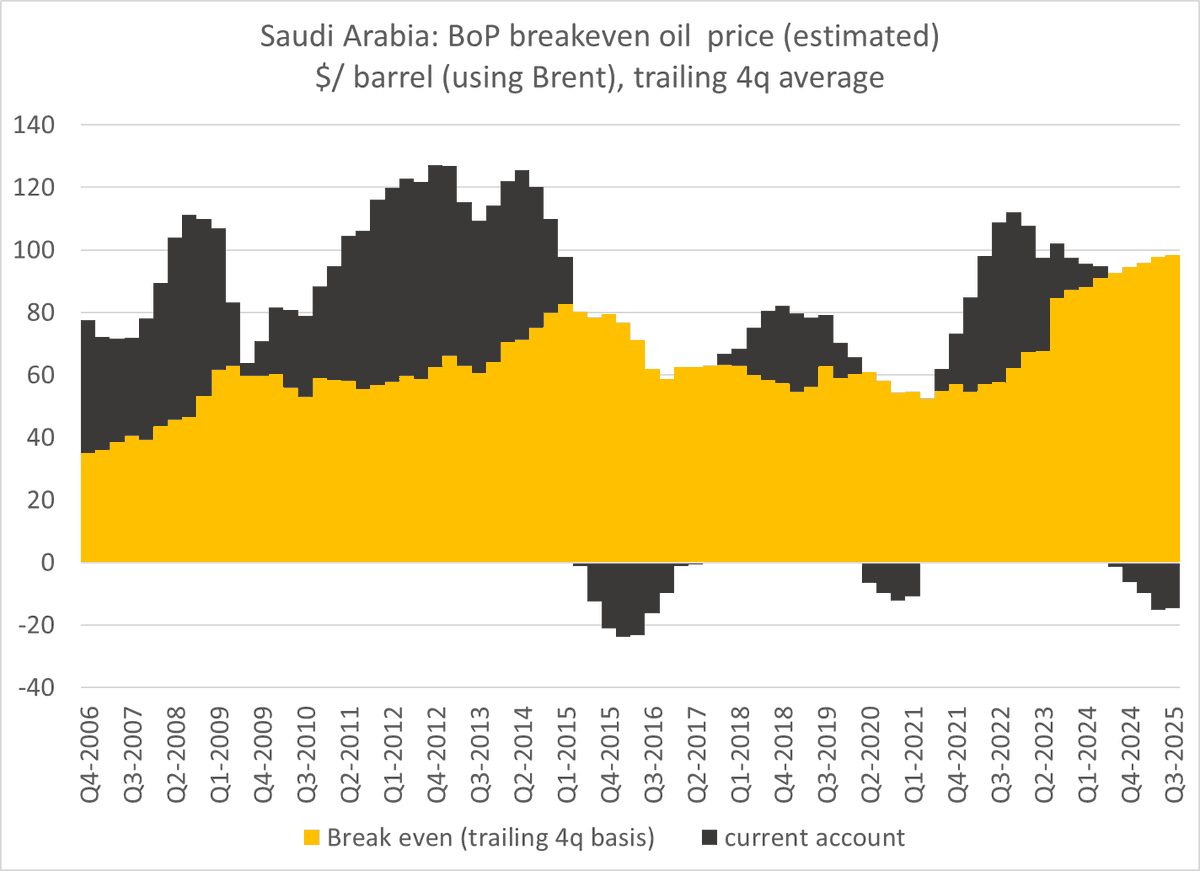
 A reminder -- the external break even is calculating using reported oil export revenues, the non-oil current account, and net exports (my numbers there are dependent on getting regular updates from @Rory_Johnston )
A reminder -- the external break even is calculating using reported oil export revenues, the non-oil current account, and net exports (my numbers there are dependent on getting regular updates from @Rory_Johnston )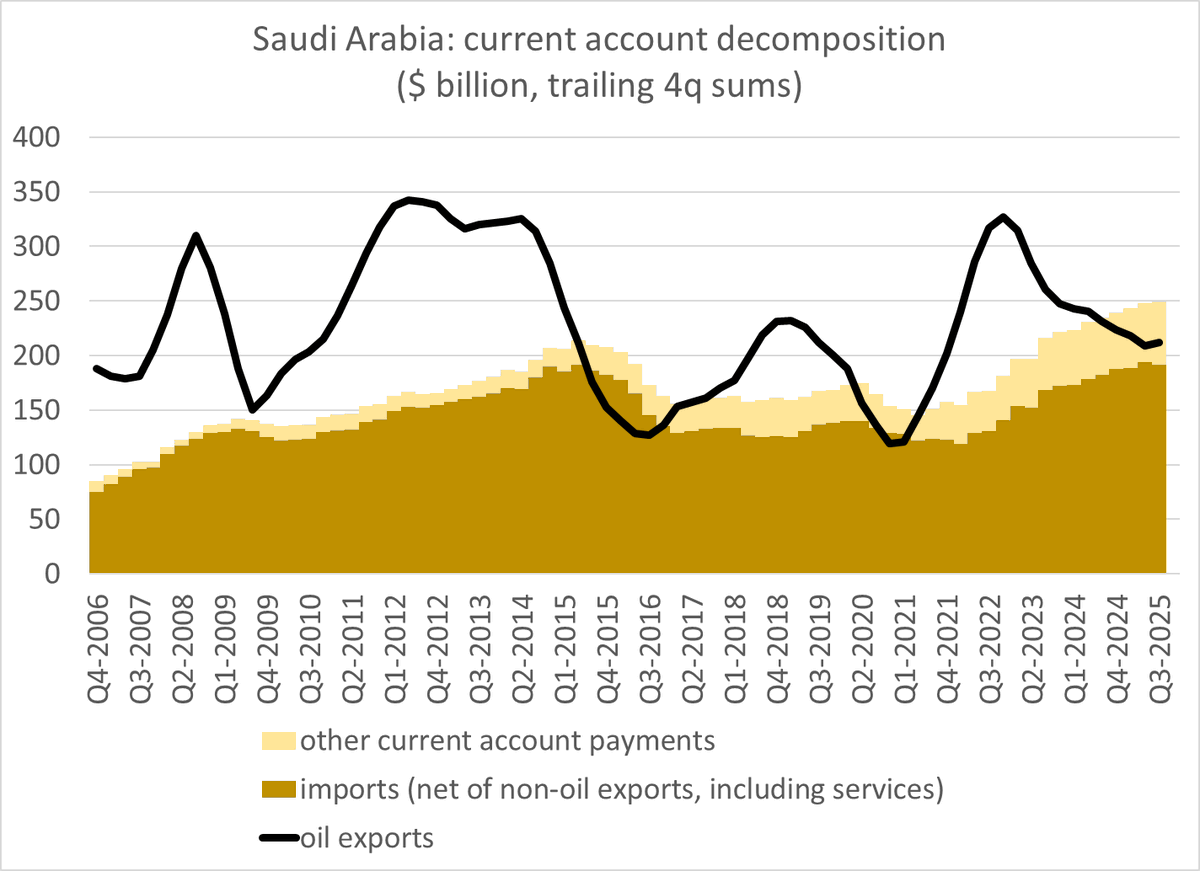
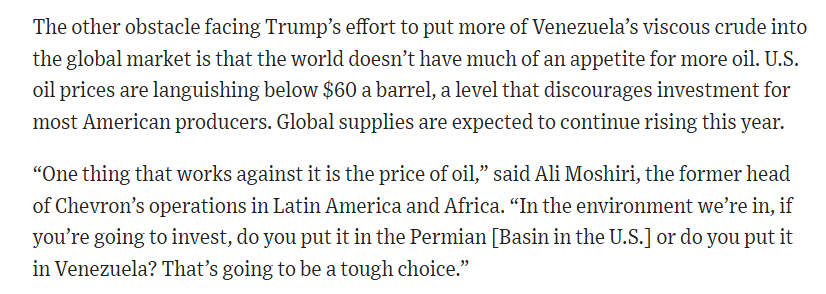
 Venezuela's oil is heavy and sour, so it trades at a discount to sweet light.
Venezuela's oil is heavy and sour, so it trades at a discount to sweet light.
 Rhee also emphasized the foreign exchange implications of Korea's investment pledge (part of its "deal" with Lutnick and Trump). Rhee "vowed to oppose any US investment decisions that could threaten the stability of the foreign-exchange market"
Rhee also emphasized the foreign exchange implications of Korea's investment pledge (part of its "deal" with Lutnick and Trump). Rhee "vowed to oppose any US investment decisions that could threaten the stability of the foreign-exchange market"

https://twitter.com/petereharrell/status/2007083412281258422China's top leadership seems convinced that there is a "fortress" in one country global equilibrium -- where China exports (and controls key supply chains) but doesn't import (at least not much beyond oil and iron)

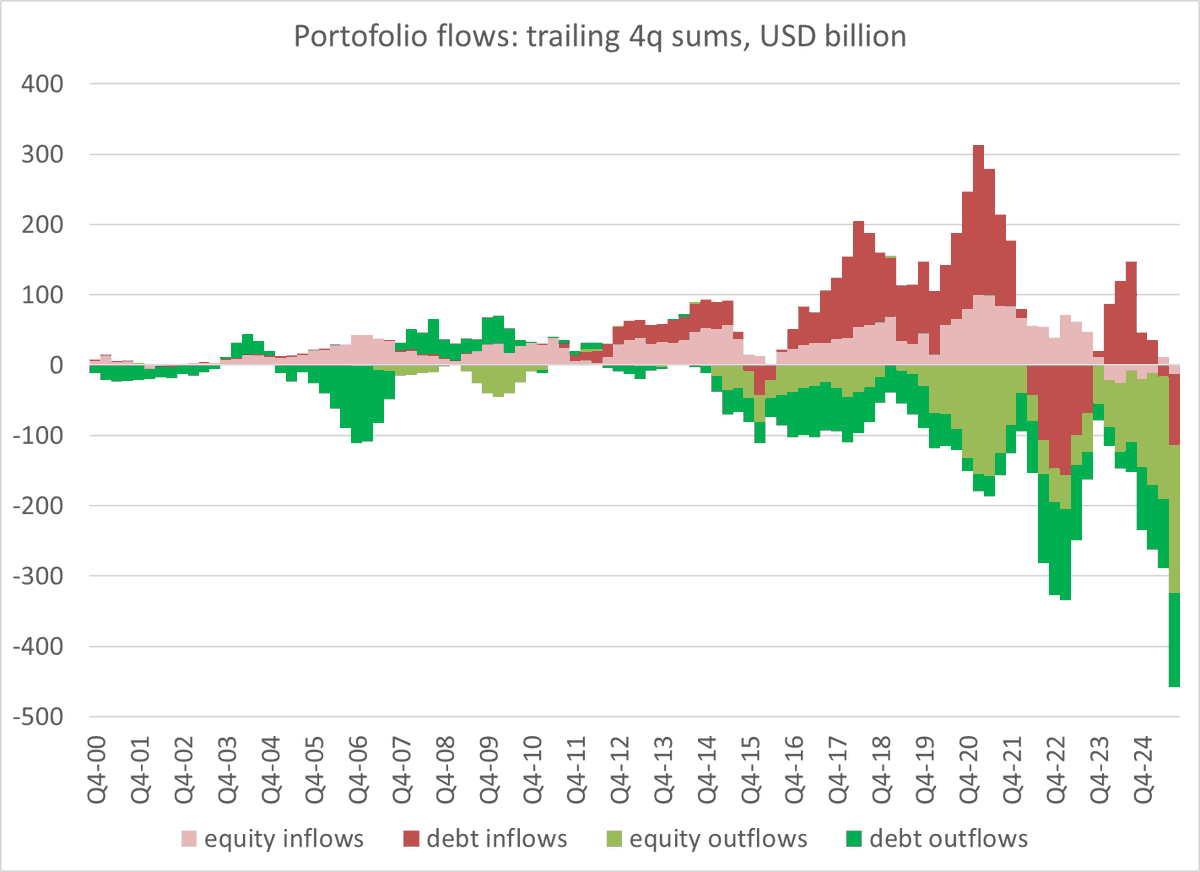
https://twitter.com/Brad_Setser/status/2006478341457719766
 This is a reversal of inflows from back in 2023 ... and as my earlier thread notes, I think the change in direction factors into the reported current account surplus (even though it should not technically) given China's error minimization formula post 2022 ...
This is a reversal of inflows from back in 2023 ... and as my earlier thread notes, I think the change in direction factors into the reported current account surplus (even though it should not technically) given China's error minimization formula post 2022 ...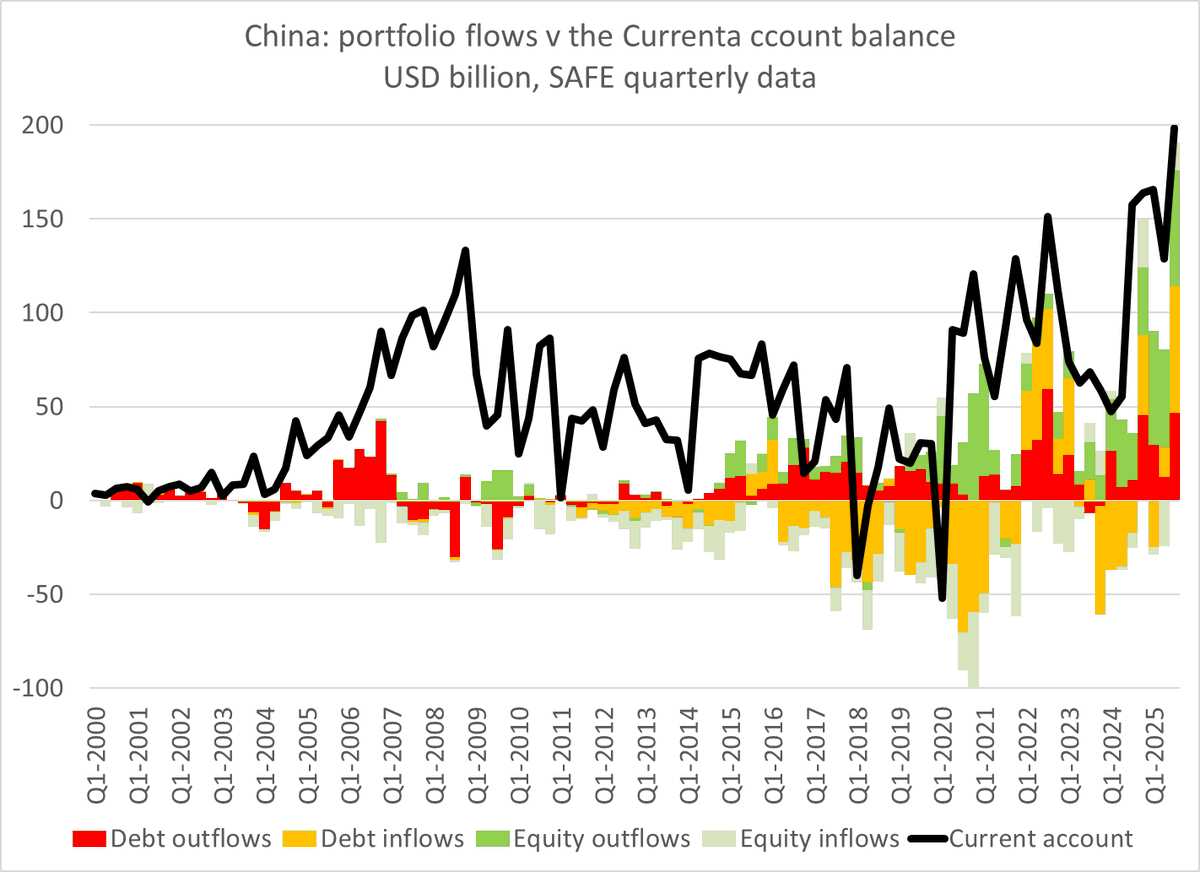
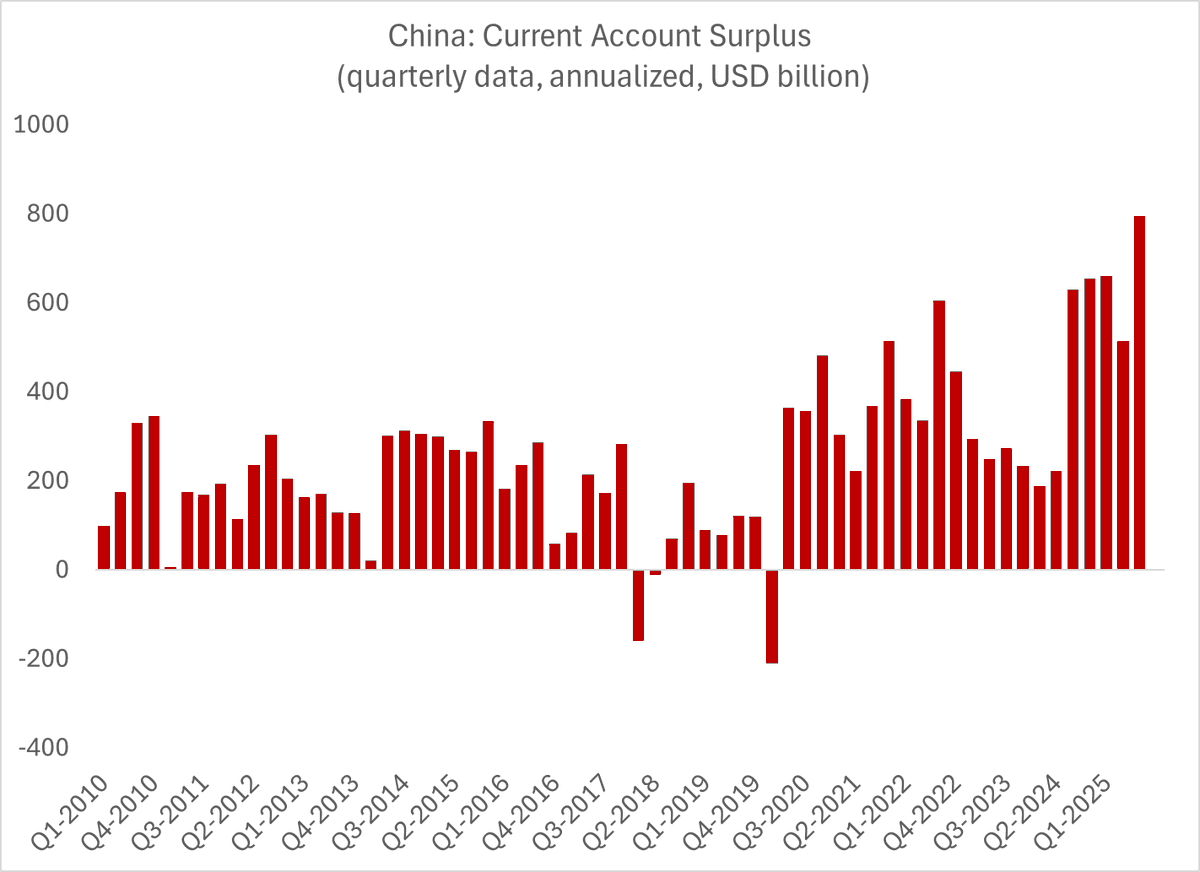
 Let's start with the current account -- $200b or so in q3. That is still a bit smaller than it should be. But it is has jumped from an implausibly low $50b a quarter in late 23 and early 24 to a number that is much closer to reality.
Let's start with the current account -- $200b or so in q3. That is still a bit smaller than it should be. But it is has jumped from an implausibly low $50b a quarter in late 23 and early 24 to a number that is much closer to reality.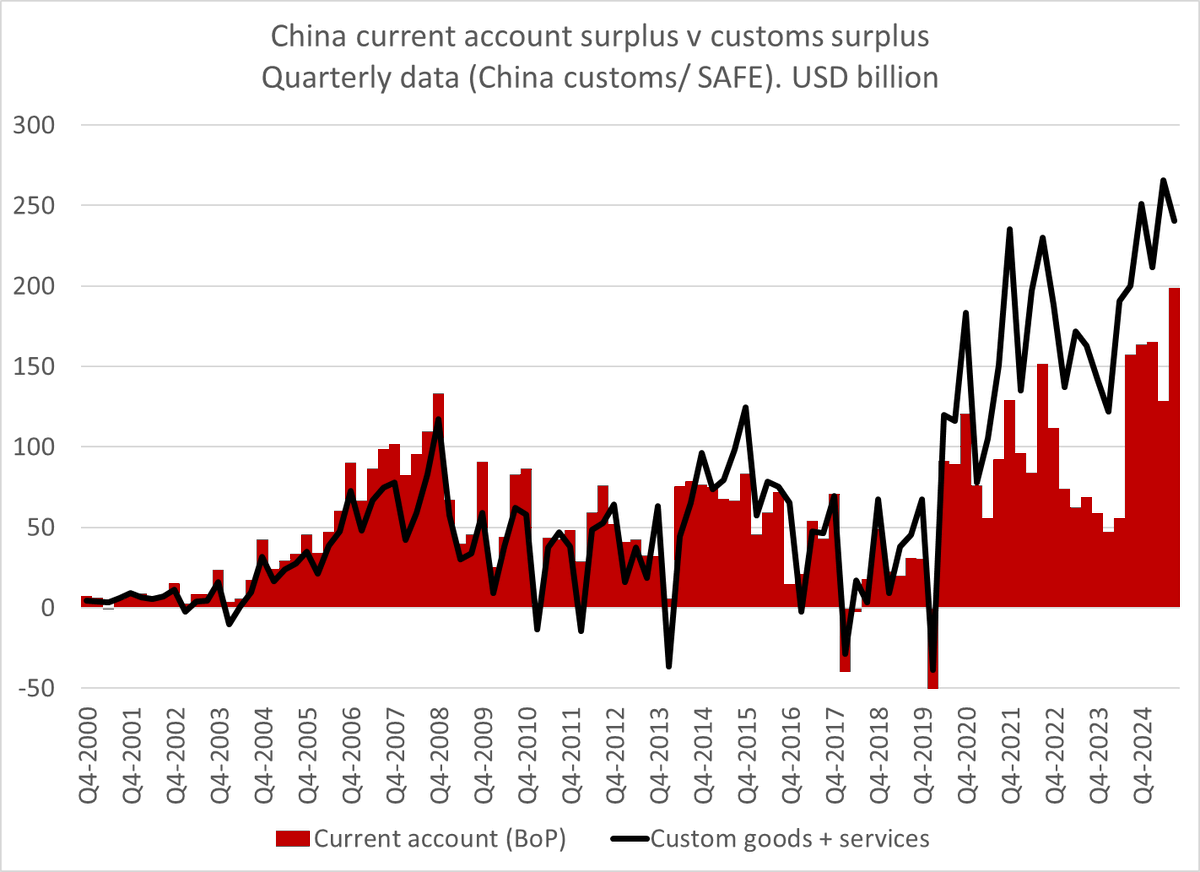

 Rate differentials (at least at certain tenors) are more yen supportive than in the past, which bolsters the case for intervention --
Rate differentials (at least at certain tenors) are more yen supportive than in the past, which bolsters the case for intervention --

 For what it is worth, nothing much showed up in the OCtober TIC data, foreign private and foreign official holdings were more or less flat
For what it is worth, nothing much showed up in the OCtober TIC data, foreign private and foreign official holdings were more or less flat

 So how could the lifers cut their hedges just after taking big losses on their unhedged positions in May?
So how could the lifers cut their hedges just after taking big losses on their unhedged positions in May?

 Korean memory chips aren't selling at the same premium as Taiwanese made GPUs, but Korea's current account surplus is huge again -- $110b plus
Korean memory chips aren't selling at the same premium as Taiwanese made GPUs, but Korea's current account surplus is huge again -- $110b plus


 The IMF has lagged on this issue, not led ... and it still isn't quite calling for a nominal appreciation (though Georgieva may have hinted at the need for nominal appreciation to offset inflation differentials). The EU Chamber is more explicit (from the FT)
The IMF has lagged on this issue, not led ... and it still isn't quite calling for a nominal appreciation (though Georgieva may have hinted at the need for nominal appreciation to offset inflation differentials). The EU Chamber is more explicit (from the FT)

 "Strip out imports of energy, food and raw materials, and China is on track this year to post a surplus in manufactured goods of around $2 trillion, a huge sum that is on a par with the annual national income of Russia or Italy" 2/
"Strip out imports of energy, food and raw materials, and China is on track this year to post a surplus in manufactured goods of around $2 trillion, a huge sum that is on a par with the annual national income of Russia or Italy" 2/ 

 Very much agree with his overall thesis, and with his policy prescription
Very much agree with his overall thesis, and with his policy prescription

 Implicit in the chart is the observation that the rest of oil-importing East Asia has maintained its goods surplus even as China's surplus has soared (helped by demand for Korean and Taiwanese chips)
Implicit in the chart is the observation that the rest of oil-importing East Asia has maintained its goods surplus even as China's surplus has soared (helped by demand for Korean and Taiwanese chips)

https://twitter.com/KennedyCSIS/status/1994447087212130765
 FX settlement data clearly shows appreciation pressure (with intervention at the fix not at the strong side of the band)
FX settlement data clearly shows appreciation pressure (with intervention at the fix not at the strong side of the band)
https://twitter.com/BaldingsWorld/status/1992755045603873100I would be the first to say that not enough was/ is being done on active pharmaceutical ingredients. But inside and outside of government I advocated for the 301 tariffs to be extended to rare earths/ magnets ... which was in the end done as part of the 301 review

 The runup in foreign holdings of Treasuries has all been "private" -- tho note that funds that China holds in private custodians in Europe register as private, so the split is imprecise
The runup in foreign holdings of Treasuries has all been "private" -- tho note that funds that China holds in private custodians in Europe register as private, so the split is imprecise

 Taiwan's soaring surplus though hasn't translated into soaring demand for bonds in the last 4 quarters -- bond purchases picked up in q3, but no longer are on the scale needed to match the huge current account surplus
Taiwan's soaring surplus though hasn't translated into soaring demand for bonds in the last 4 quarters -- bond purchases picked up in q3, but no longer are on the scale needed to match the huge current account surplus